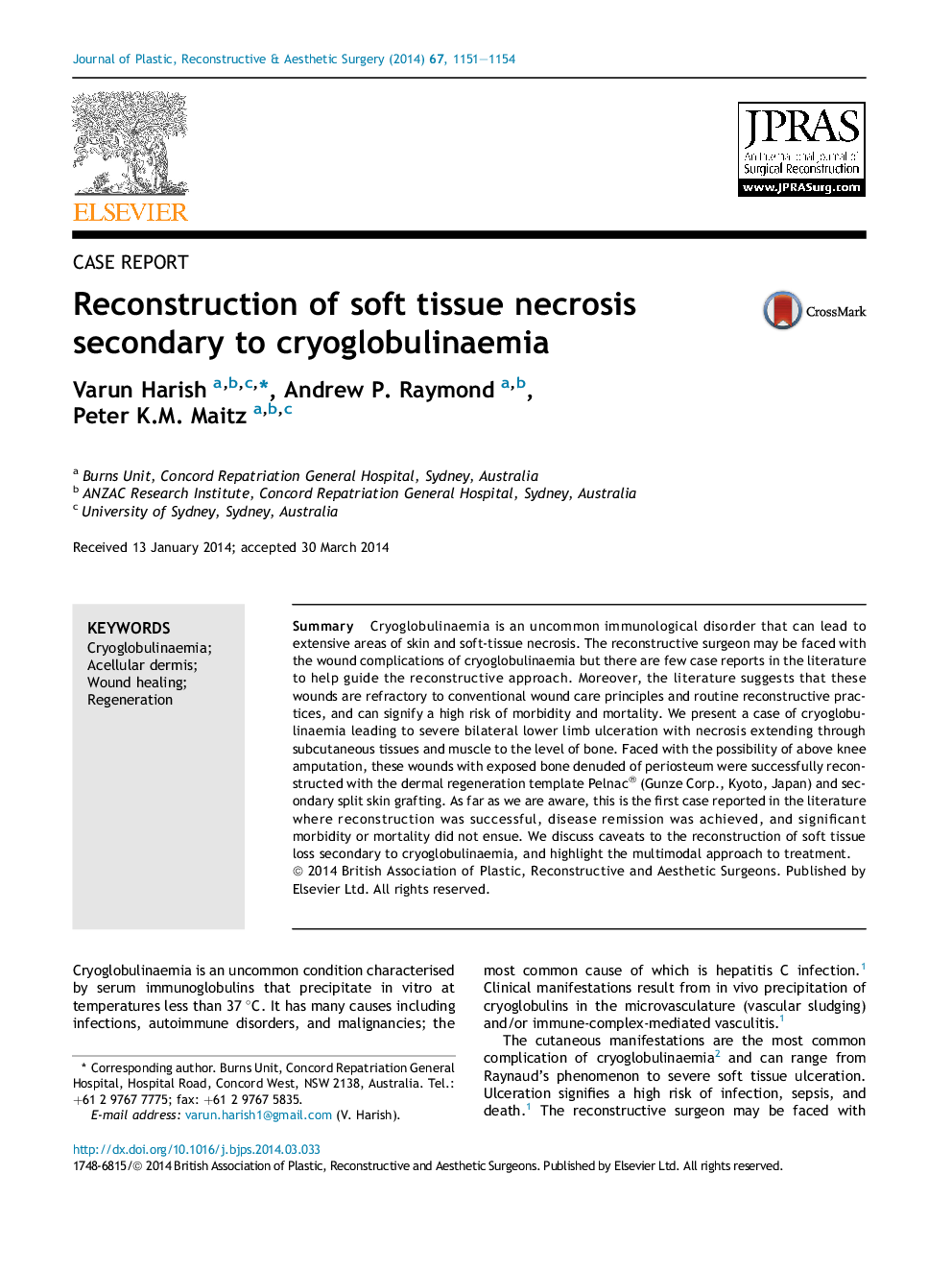| Article ID | Journal | Published Year | Pages | File Type |
|---|---|---|---|---|
| 6214743 | Journal of Plastic, Reconstructive & Aesthetic Surgery | 2014 | 4 Pages |
SummaryCryoglobulinaemia is an uncommon immunological disorder that can lead to extensive areas of skin and soft-tissue necrosis. The reconstructive surgeon may be faced with the wound complications of cryoglobulinaemia but there are few case reports in the literature to help guide the reconstructive approach. Moreover, the literature suggests that these wounds are refractory to conventional wound care principles and routine reconstructive practices, and can signify a high risk of morbidity and mortality. We present a case of cryoglobulinaemia leading to severe bilateral lower limb ulceration with necrosis extending through subcutaneous tissues and muscle to the level of bone. Faced with the possibility of above knee amputation, these wounds with exposed bone denuded of periosteum were successfully reconstructed with the dermal regeneration template Pelnac® (Gunze Corp., Kyoto, Japan) and secondary split skin grafting. As far as we are aware, this is the first case reported in the literature where reconstruction was successful, disease remission was achieved, and significant morbidity or mortality did not ensue. We discuss caveats to the reconstruction of soft tissue loss secondary to cryoglobulinaemia, and highlight the multimodal approach to treatment.
